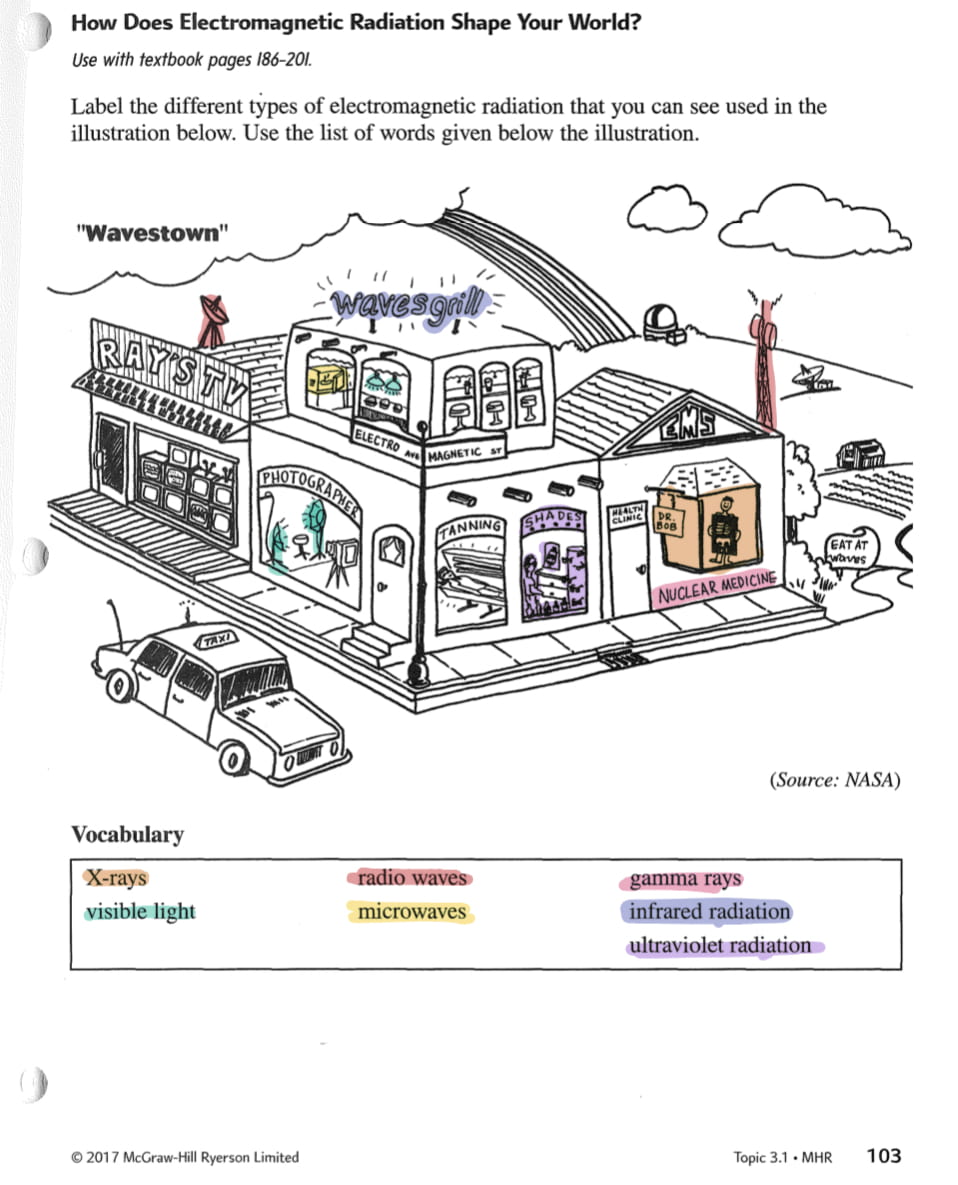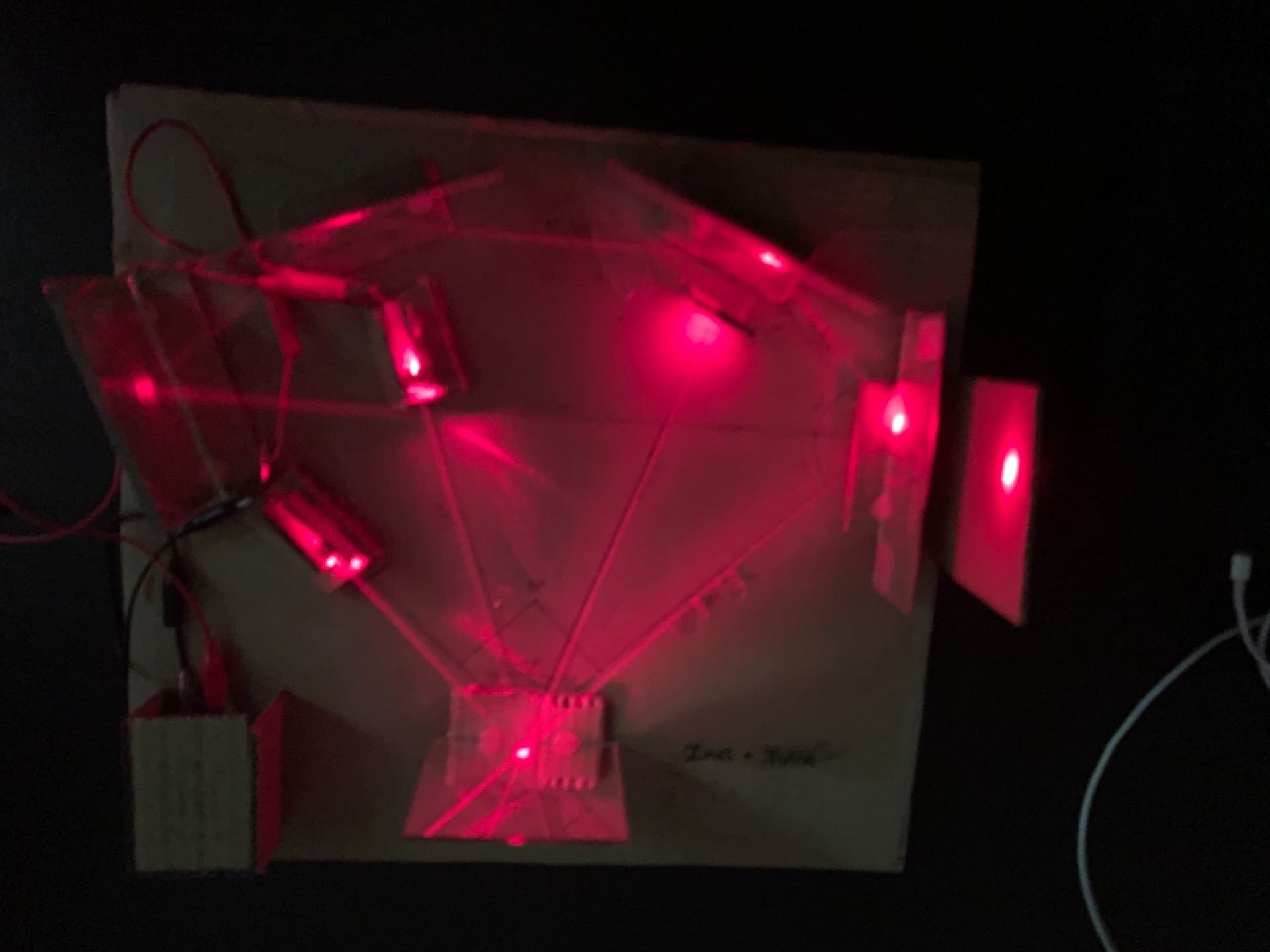Hello,
For this project we focus on lasers. What helps create lasers, different types of light, the Pythagorean theorem, and more. This was a mix of science and math that helped us to create our final project of a laser display using mirrors, right angle triangles, and lasers to create different shapes.
Mind Map 🧠:
To kick start this project we started with a mind map. This mind map consisted things we knew about lights, what questions we had about light, questions or knowledge about different forms of light.
We then later answered some of these questions or added more facts we learned about light. Most of my extension points consisted of question answers (yellow) over more knowledge points (Black). I think is a great way to lay out all your information and to lay out all of your thoughts on the subject.
Science Workbook 3.1 📚:
Like any sort of workbook sheet we started of by reading an online chapter on the subject matter that would help us answer question in the work book. I’m focusing 9on this workbook in particular because it helped us learn about different types of electromagnetic radiation. Electromagnetic Radiation is the source of most light or electricity. Types of Electromagnetic Radiation are: Uv (Ultra Violet), Radio Waves, Gamma Rays, Microwaves, Infrared Radiation, X-Rays, and Visible Light.
The photo above shows some different types of light in every day objects. For example for visible light I highlighted a light bulb (Teal).
Milestone 3 🪨:
For milestone 3 we started to experiment with light and the way it bended off of reflective objects like mirrors. To do this we had a single mirror set up with a protractor underneath, we then set up a light box and angled the light beam at different angles. We then made our question “Will the reflected ray always be the same as the incident ry in relation to the normal, no matter the angle?” Which then concluded in us testing our hypothesis “Yes, we think that this is possible, and that the incident ray will be at the same angle in relation to the normal to reflected ray”. To do this we set up the light box at a certain angle on one side of the protractor and watched it bounce back at the same angle.
We tried this a multiple of times to help us prove our hypothesis, which was in fact true. We found that light will always bounces back at the same angle only on the other side of the protractor, even if you put a mirror directly at the other side it will always lead off at the same angle.
Milestone 4 🪨:
Next we worked on something similar to milestone 3, we used an online ray maker and created right angle triangles with the help of tools like rulers, protractors, and mirrors that where all given to us by the website. We then continued on a path just like milestone 4 where you ask a question then try and predict an answer until it is either proven true or false by your knowledge. The question for this milestone was “How can we test the Pythagorean theorem and the law of reflection?” And my hypothesis was “I think that if you place a mirror at any angle you’ll be able to create different right angle triangles that follow the Pythagorean theorem and law of reflection”. Then I went on to create two right angle triangles that followed the Pythagorean theorem and the law of reflection, during this process I tried to prove my hypothesis to be correct but instead failed as I found that a mirror place at a random angles couldn’t make right angle triangles, the mirrors had to be place at specific angles and places.
The photos above are proof that my hypothesis was wrong, the marked up images are shown to follow both the Pythagorean theorem and the law of reflection.
Milestone 5 🪨:
Finally we came back together as a group (Nolan, Alicia, Dylan, and Me) and started working on our final project. First we had to choose a shape to create out of lasers we wanted to make a pyramid or a triangle shape but then we realized the need of a right angle triangle in the display so we modified our shape a little giving us our final shape, a diamond. Then we started measuring the sides of the diamond to be precise. Then started place our mirrors and measure the lasers to precisely bounce off the other mirrors. In total we had two lasers and five mirrors given to use to work with. We then created blockers and little stands for the mirrors and lasers. Slowly giving us the diamond shape we desired, then we started to light the lasers up giving us our shape.
The photo above is of our final outcome, the lasers where illuminated by a smoke machine.
Circular Competency’s ⭐️:
1: Questioning and Predicting: Demonstrate a sustained intellectual curiosity about a scientific topic or problem of personal interest: I definitely could have work on this I didn’t use all my class time as well as I should have. I did goof off a little but the end a definitely produced a good amount of sufficient amounts of work.
2: Communicating and Representing: Represent mathematical ideas in concrete, pictorial, and symbolic forms: I think a did a mediocre job at this, I didn’t really understand all of the science and math used for this project but I definitely knew the foundation of math in this project that helped me and my group.
3: Applying an Innovating: Co-operatively design projects: I think I did a pretty good job at this competency I helped my group build and create the final product, I helped with the building by measure and line up the placement of mirrors. I also helped with the measurements of the lines the helped us place the lasers. I also helped my group place the lasers to be precise.
In the end I think this project went well and was very fun to create, It was also amazing to learn about light for our last project before moving into humanities and maker.
Thank you for reading,
Ines
[P.S: Sorry for the blur on some photos :P]









Be First to Comment